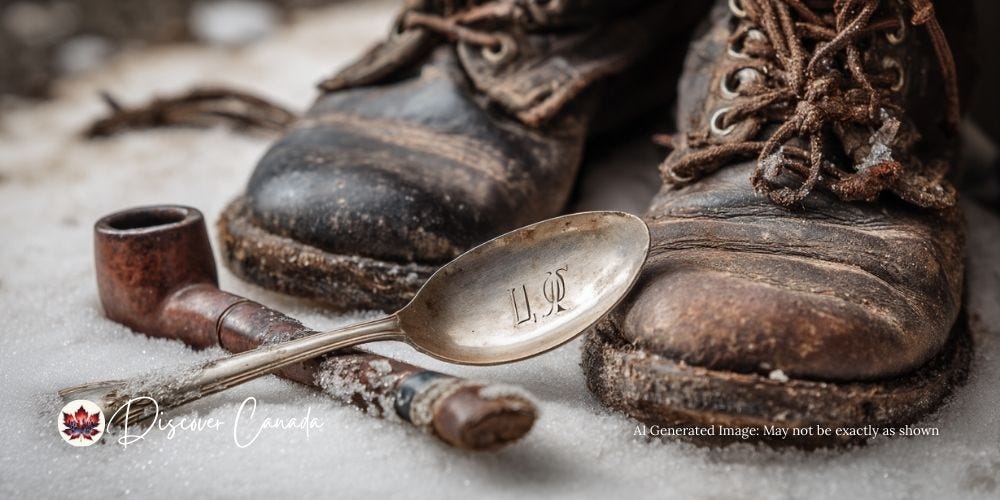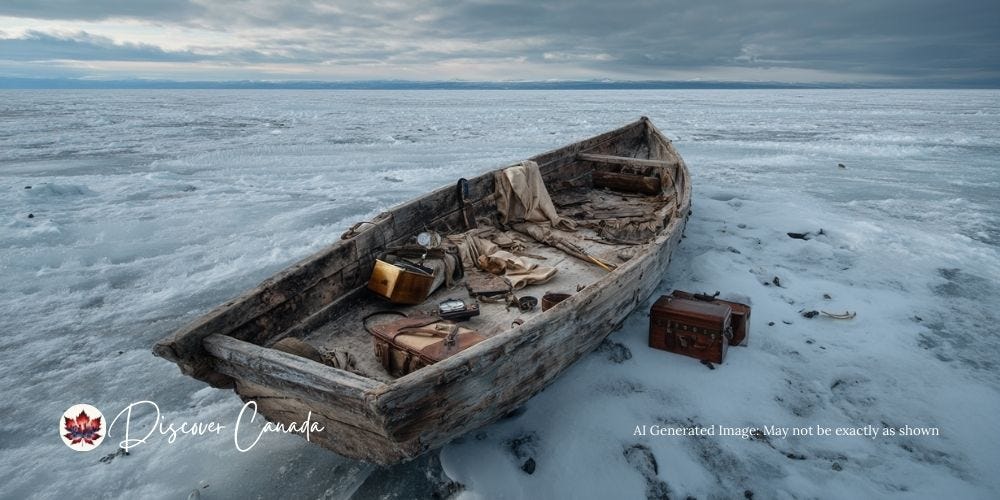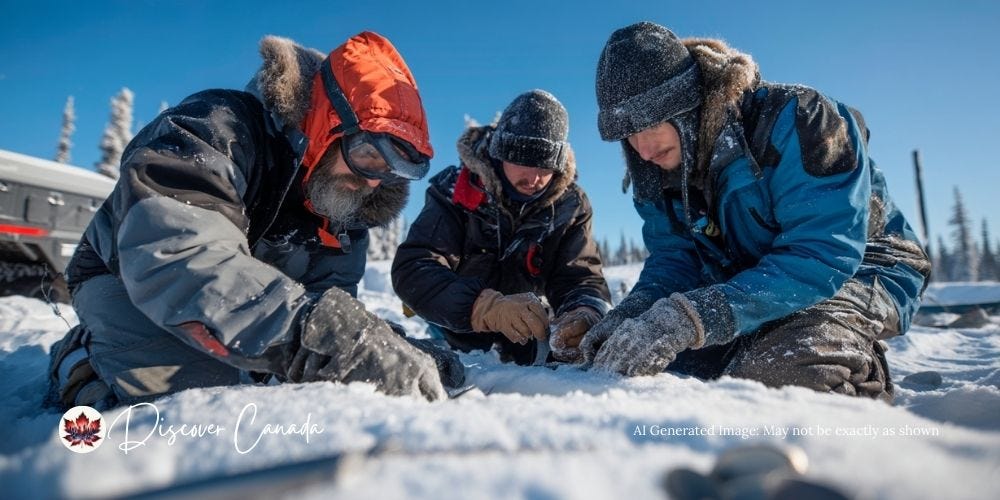Frozen Lives: Fragments of Franklin’s Forgotten Sailors
Beyond Sir John Franklin, fragments of graves, spoons, and bones reveal the haunting human story of 128 sailors lost in the Arctic ice.
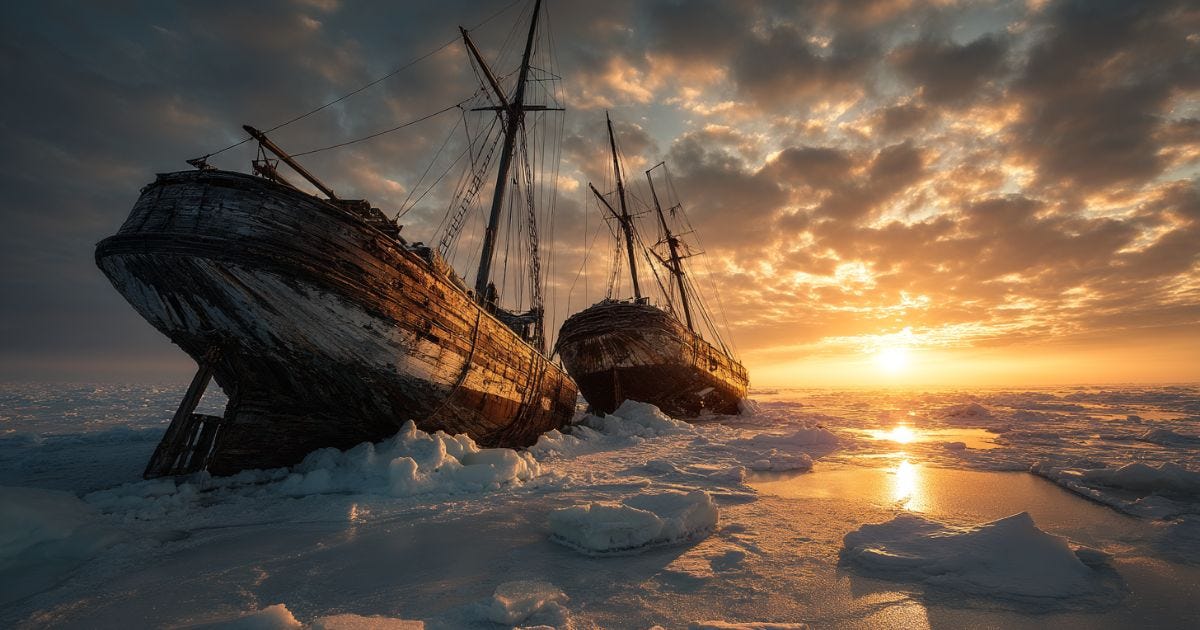
🎧 Listen While You Read
Hit play to let the companion audio carry you deeper into the story while you explore the words below.
Introduction
The Arctic does not forgive easily. In 1845, two proud Royal Navy ships — HMS Erebus and Terror — slipped into the ice, carrying 128 men in search of the fabled Northwest Passage. Most remember the name of their commander, Sir John Franklin. But for the ordinary sailors — carpenters, stokers, cabin boys — history has offered little more than silence.
What remains of them are fragments: a silver spoon carved with initials, boots hardened by frost, and graves dug into the permafrost of a lonely island. These are not the sweeping tales of conquest that filled Victorian newspapers. They are quieter, more human, and infinitely more haunting.
Key Takeaways ✨
🚢 128 men set out aboard HMS Erebus and Terror in 1845; none returned.
🪦 Three graves on Beechey Island preserve the faces of sailors who never saw another summer.
🔎 Artifacts — such as spoons, buttons, and boots — reveal the ordinary lives behind the legend.
🧊 Inuit oral history and science together help us glimpse their final struggles.
The Franklin Expedition in Brief
Departure and Disappearance
In May 1845, two ships — HMS Erebus and HMS Terror — set sail from England under the command of Sir John Franklin. Their mission was to chart the elusive Northwest Passage. On board were 128 officers and crew, a mix of seasoned sailors and young adventurers. By July 1845, whalers in Baffin Bay sighted the ships — the last time Europeans would ever see them afloat.
Years of Silence
When no word arrived in England, the Admiralty and Franklin’s determined widow, Lady Jane Franklin, launched massive search expeditions. In 1850, searchers reached Beechey Island, where they found the graves of three sailors — the first grim evidence of the expedition’s fate.
The Final Record
A single message, the Victory Point Note, discovered on King William Island, told the stark truth: by April 1848, Franklin was dead, both ships had been abandoned, and 24 men were already lost. The survivors, gaunt and desperate, attempted to march south across the ice.
Mystery and Rediscovery
For generations, Inuit oral histories spoke of starving men dragging sleds, ships trapped and drifting, and scattered camps on the tundra. Only in the 21st century did the Arctic yield its secrets: the wreck of HMS Erebus was discovered in 2014, followed by that of HMS Terror in 2016, both resting silently in the waters of Nunavut.
The Men Behind the Mission
A Crew of 128
Behind the name Sir John Franklin stood 127 other men, each with their own story. The expedition roster included officers from noble families, seasoned Arctic veterans, and young sailors barely out of their teens. There were marines, carpenters, blacksmiths, cooks, and ship’s boys — a cross-section of mid-19th century naval life. Their skills kept the ships afloat, repaired sails, stoked coal fires, and ensured order in the frozen silence of the Arctic.
For many, this voyage promised steady wages, adventure, and the honour of serving on a mission that the Admiralty trumpeted as a guaranteed success. Few could have imagined that their names would instead be carved on wooden crosses in the permafrost, or lost altogether to drifting ice.
Dreams and Duty
Some men were driven by ambition — a chance to distinguish themselves on a famous expedition. Others sought escape from the grind of Britain’s industrial cities, lured by tales of discovery in the age of empire. Even the lowest-ranking sailors carried the same dream: to return home with stories that would elevate them above the ordinary.
But the Arctic was unforgiving. Where they had expected discipline and discovery, they found isolation and hunger. Their sense of duty bound them to the mission and to each other, even as their situation worsened. What remains today are fragments of their presence — initials scratched on a spoon, buttons scattered in the tundra — faint echoes of ordinary men who became part of one of history’s greatest tragedies.
Graves in the Ice: The Beechey Island Burials
Three Young Men Preserved
When searchers reached Beechey Island in 1850, they found three simple graves marked with wooden boards: John Torrington, William Braine, and John Hartnell. These men had died during the first winter, 1845–46, before the expedition’s true ordeal began.
More than a century later, scientists exhumed their bodies, preserved almost eerily intact by the Arctic permafrost. Torrington, just 20 years old, still had blue eyes visible under frozen lids. Hartnell’s skin bore the marks of malnutrition and disease. Braine, older and sturdier, had succumbed as well. Their faces, frozen in time, became haunting emblems of the price paid by ordinary sailors.
What the Graves Tell Us
The Beechey graves offered the first clues to the expedition’s suffering. Autopsies revealed signs of tuberculosis, pneumonia, and scurvy. High levels of lead were also detected, likely from poorly soldered food tins or contaminated water pipes. The graves told a grim story: even in the first year, sickness and poor nutrition were already taking a toll on the crew.
For the Victorians who searched in vain, these graves were heartbreaking proof that Franklin’s men had perished. For us today, they are a rare window into the individual human cost — not nameless sailors, but young men with identities, preserved in the ice where they had laid down their hopes of returning home.
Objects That Spoke for Them
A Silver Spoon with Initials
Among the most poignant relics are personal utensils. A silver spoon engraved with the initials “F.R.M.C.” was found by searchers and traced back to Francis Rawdon Moira Crozier, Franklin’s second-in-command. Other spoons carried the scratched initials of ordinary seamen, showing how prized possessions were marked and sometimes traded as survival grew desperate. Each piece tied back to a man, a name, and a life once lived far from the ice.
Boots, Buttons, and Pipes
Scattered across campsites and along trails are boots with worn soles, uniform buttons, and clay pipes. These were not ceremonial objects but daily necessities, abandoned when hunger and frostbite forced men to march south toward an uncertain hope. Their wear and tear remind us of the mundane routines — smoking for comfort, patching clothing, walking mile after mile — that defined the sailors’ final days.
The Boat of Bones
The most haunting discovery was a wooden boat found on King William Island. Inside lay skeletal remains of at least two men, surrounded by personal items — combs, a watch, even chocolate and tea. The boat had been dragged across the ice, then abandoned, a desperate attempt to escape. In its frozen timbers, the tragedy is written plainly: men clinging to fragments of home even as their strength failed.
These objects are not mute relics. They whisper of men who carried habits, comforts, and identities into the most hostile wilderness on Earth — and left them behind as echoes in the snow.
Voices from the Arctic: Inuit Memories of the Men
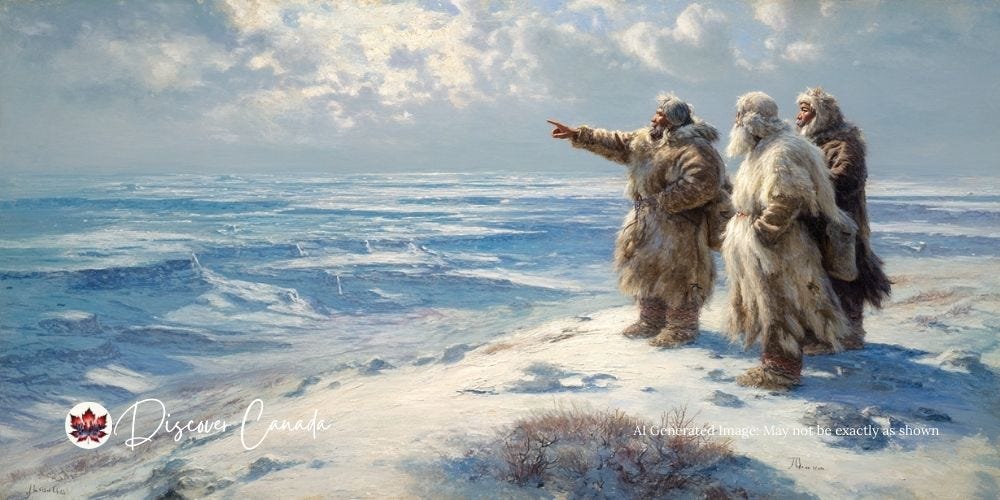
Stories of Starving Strangers
For generations, Inuit oral histories told of gaunt, hollow-eyed strangers stumbling across the ice near King William Island. Elders spoke of groups of men dragging heavy sleds, their uniforms in tatters, their faces drawn with hunger. Some were found camped near the shore, boiling boots for food. Others were discovered lying lifeless on the snow, their journey ended in silence.
These accounts, passed down with remarkable consistency, described details Victorian searchers often dismissed: ships drifting in the pack ice, men abandoning camps, and even acts of desperation such as cannibalism. At the time, many in Britain refused to believe Indigenous testimony. Yet in the 20th and 21st centuries, archaeologists confirmed that Inuit memories had been astonishingly accurate.
Fragments Confirmed
When modern expeditions uncovered sites littered with bones, buttons, and fragments of wood, they matched descriptions Inuit hunters had given over a century earlier. The discovery of HMS Erebus in 2014 was guided in part by oral traditions that pointed to its resting place.
Inuit stories do more than fill gaps in the record. They restore humanity to the sailors — not faceless victims, but desperate men who staggered through an unforgiving landscape. And they remind us that history is not only written in archives, but carried in memory, voice, and community.
Science on the Bones
Lead, Scurvy, and Starvation
Modern science has examined the crew’s remains with the tools of chemistry and medicine. Analyses of hair, nails, and bone revealed elevated levels of lead, likely from soldered food tins or lead-lined water tanks. Combined with a poor diet, this could have weakened immune systems and clouded judgment.
Evidence of scurvy — the slow agony caused by a lack of vitamin C — appeared in bone tissue, showing that men suffered from bleeding gums, joint pain, and exhaustion. Signs of tuberculosis and pneumonia were also detected in preserved bodies. And as the final march south unfolded, there is no doubt that starvation became the greatest enemy. Skeletal remains show emaciation so severe that men carried little more than skin and bone.
What Science Can’t Answer
Forensic tests provide a grim list of possibilities, but they cannot capture the lived experience of the sailors. Science can measure lead levels in a fingernail, but not the despair of a sailor watching friends collapse around him. It can reveal scurvy in bone tissue, but not the bitter taste of boiling leather for food.
The exact balance of causes — lead poisoning, disease, cold, or simple hunger — may never be known. What is clear is that the men died slowly, in pain, and far from home. The Arctic preserved their remains, but not their voices. To hear those, we must piece together fragments from artifacts, memory, and imagination.
The Human Cost of Glory
Forgotten Families
For each sailor who vanished into the Arctic, there was a family left waiting. Mothers in Liverpool, wives in Portsmouth, children in dockside towns — all expecting letters that would never arrive. The Admiralty’s silence dragged on for years, while Lady Jane Franklin fought to keep her husband’s name alive through relentless search campaigns. Yet for the lower-ranking men, there were no campaigns, no statues. Their families received little more than naval pensions and the unspoken grief of absence.
Some descendants kept memories alive quietly, passing them down through generations in family stories. Others faded into obscurity, their names lost except on naval rosters and weathered grave markers.
Remembering the Crew Today
Only in recent decades has attention shifted back to the ordinary sailors. The graves on Beechey Island are now historic sites, visited by researchers and tourists alike. Museums display their artifacts — spoons, pipes, and fragments of uniforms — as windows into lives that were otherwise erased. Memorials in England and Canada list the names of the crew, ensuring they are not entirely forgotten.
The rediscovery of HMS Erebus and HMS Terror has reignited interest not just in Franklin, but in the men who kept his ships afloat until they could no longer do so. Their courage, endurance, and suffering remind us that history’s greatest epics are built on the shoulders of ordinary people whose stories are rarely told.
Conclusion: History in Fragments
The Franklin Expedition is often remembered as a tale of exploration gone wrong, a grand story of lost ships and a fallen commander. But when we look closer, the fragments tell a quieter truth. John Torrington’s frozen face, a silver spoon etched with initials, a boat abandoned on the ice — these are not relics of empire, but echoes of men who once laughed, worked, and dreamed of going home.
Their lives remind us that history is not built solely on the triumphs and failures of famous leaders. It is also shaped by carpenters, cooks, and cabin boys whose names seldom appear in textbooks. Preserved in graves, artifacts, and memory, their voices still whisper across the Arctic silence.
To remember them is to honour not just an expedition, but the fragile humanity at its heart.





